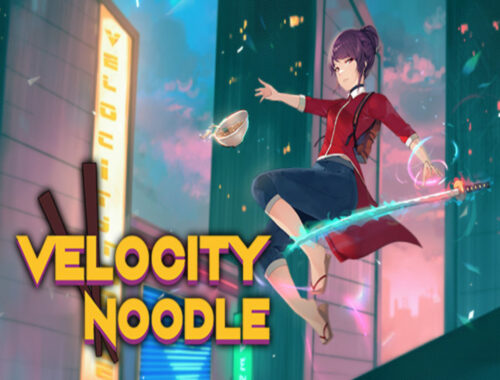Monopoly Madness Review
Fast Facts
Monopoly® Madness
Developer: Engine Software, Ubisoft
Publisher: Ubisoft
Website: https://www.ubisoft.com/en-gb/game/monopoly/madness
Genre(s): Arena Game, Board Game, Action, Adventure, Classics, Family
Platform: Xbox Series S (Also available on Steam, PS4, Switch, Stadia, Luna)
Age Rating: PEGI 3
Release Date: 09/12/2021
Price: £24.99
A code was provided for review purposes
A Warm Welcome
Monopoly Madness is a party game that is based on the intellectual property Monopoly but is completely different in terms of gameplay. Is the change exactly what the series needed to stay relevant in modern society? Find out in this Rapid Review.
To begin my adventure, I was forced to create a Ubisoft account. It was fine, and it did not detract from my experience, but it was not a welcoming experience. Still, after making the account, there was additional content locked behind a different Ubisoft account, Ubisoft Connect. I understand the decision, as it allows me to play with my save data across multiple consoles but mandating it may prevent younger audiences from beginning the title in the first place. I think the Ubisoft compatibility options would have been better if they were not mandated and instead placed in the options menu.
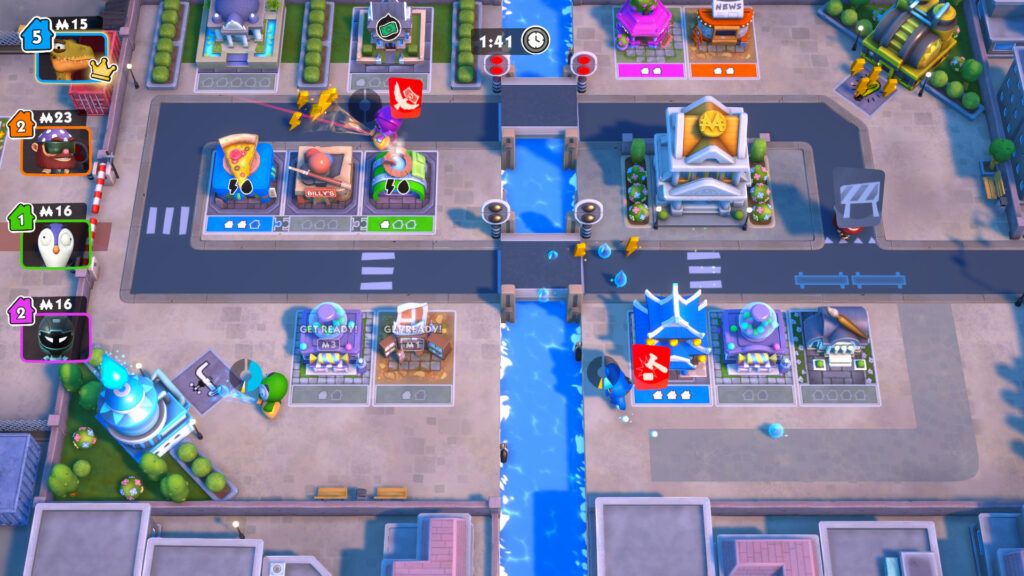
Even though my initial welcome was not the warmest, I noticed a lot of charm once I began my adventure. I was taught the ropes of the game by Mr Monopoly, I recognized various landmarks from the board game such as the Electric Company and the Water Works, plus, I was immediately captivated by the backgrounds in each location. Monopoly Madness features homages to the original Monopoly franchise while still having an identity of its own.
Making Mogul Moves
What immediately stood out to me about Monopoly Madness was the lack of a traditional board. In fact, this game is not a board game at all. Instead, it is a party game that follows the traditional Monopoly premise. There is money to collect, properties to buy, and multiple other players fiending for success. However, there are many differences as well. Each player has an item that works like a vacuum. I could use it to inhale resources and other items from the ground or I could expel air to push my rivals or spend my resources. It was a simple mechanic to learn. This simplicity made the game accessible. With this vacuum, I could upgrade and buy properties with ease. Since the primary actions of Monopoly Madness are easy to learn, it is not hard to teach the game to new players, even without the tutorial.
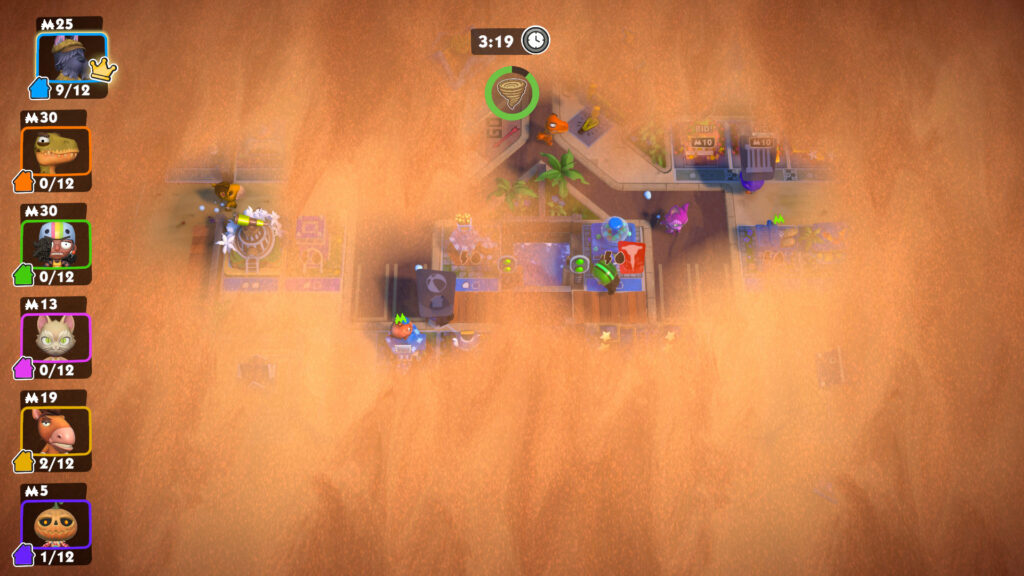
The game gets more complex when considering how frantic the game is. Typically, a game has six players, so once each player begins bidding on properties, attempting to collect resources, and trying to sabotage others, the game gets hectic quickly. Yet even though there is a lot to process, each individual action is self-explanatory, so it never becomes too overwhelming. Despite being a party game, I used logic to plan out my next move and chose my actions carefully. Even though it was accessible, experience makes the game more enjoyable. I had a good time planning out different strategies that would ultimately lead to my success.
Multiple Ways to Play
There were a few different game modes to play in Monopoly Madness. There was a story campaign, local competition, and there was also a team mode. The story mode features the most gameplay variety, as there are different win conditions throughout the levels. However, the local competition allowed me to pick whichever map I wanted to play on. There were a few options as well that helped me calibrate the experience, but it lacked the variety in win conditions that could be seen throughout the story mode. Unfortunately, this meant that local competition revolved around the same objective each time. Even though there were some things to vary the gameplay, the gameplay loop got repetitive quickly. I would have liked to see some ways to change the objective, like those featured in Fluxx. Even including the option to alter the objective before the game would have been a nice addition.
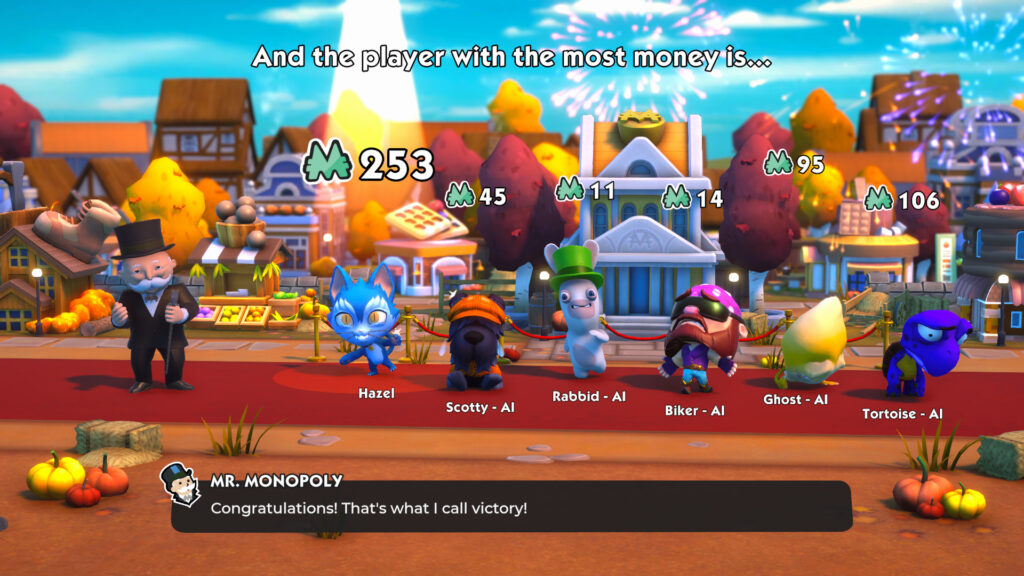
Despite the lack of options seen in the local competitive modes, there were some ways to make the matches feel unique. There were four different environments and five different maps featured in each. Each map had a unique tileset though the properties themselves did not change much. However, the different locations had different stage hazards, layouts, and even varying items. It was interesting to see how the different areas impacted the flow of the gameplay. The hazards ended up having a large impact on the game. Sometimes areas would slow me down, there would be new obstacles, or sometimes there would be a surplus of cash on the ground. These aspects made each environment unique. Unfortunately, they did not change the gameplay enough to make a substantial difference. The core gameplay loop was practically identical regardless of the scenery. Plus, the stage hazards were rarely significant.
Community Chest
The most important element of the game ended up being the community chests. These were items that helped me or hindered my foes. They were varied, interesting, and were one of the most crucial features of the game. However, some of them were overly powerful. Plus, while there were some items that were inaccessible while in the lead, all items were evenly distributed. Thus, instead of balancing the game, often, the winning depended on getting lucky with the items. The powerups in Monopoly Madness were extremely powerful. One began an auction on another player’s property, another altered the controls of surrounding players, and another barricaded an area on the map for a brief period. When used in succession, these items can completely shut players out of the game. These community chests took a forefront in the title. Despite their power, I think the item focused gameplay was fun albeit chaotic.
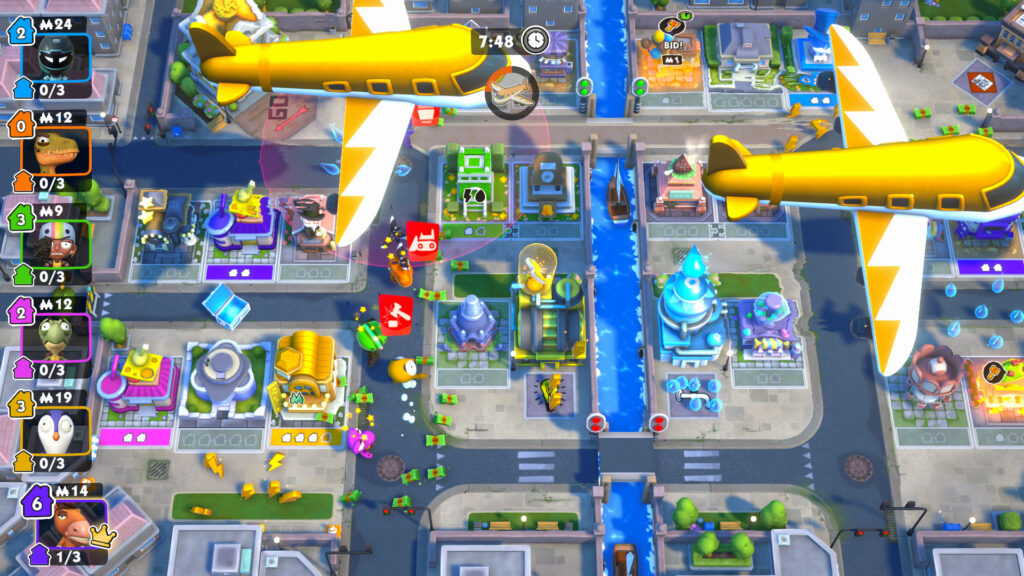
Sounds and Sights in the City
To contrast the influence of the community chest, selecting a character had no significance on the game. Even though there was a large portion of the cast to unlock and there were hats for them to wear, the characters had no differences in their abilities. The characters had little meaning. Moreover, unlike Mario Party where there are recognizable characters to select from, Monopoly Madness features nineteen generic characters and Rabbid. Though the Monopoly franchise does not have the largest host of unique characters, the generic characters featured in this title do not even have names. It was underwhelming, especially when Ubisoft has such a diverse roster of characters to choose from. Additionally, the designs of the characters themselves are incredibly basic. They were not that fun to play as since they did not have much originality. Though a specific grievance, the lacklustre roster made the game less fun.
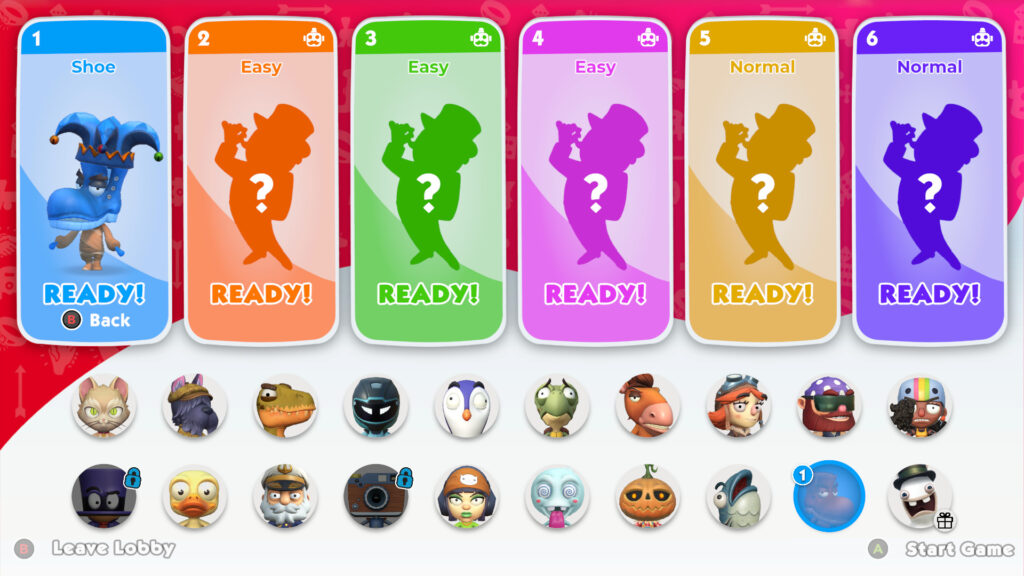
Though the roster was lacking originality, all the characters were visually pleasing. The same sensation occurred throughout the game. It looked visually charming, but each asset was very generic. Still, the visuals compliment the title nicely, and there is much to appreciate there. The sound design was pretty good too. The music was nice, and it captured both the atmosphere and any upcoming events. Even the announcer was energetic and enthusiastic. The game was clearly polished nicely even if the visuals were not exemplary.
Conclusion
Overall, Monopoly Madness is a fun party game that can be enjoyed both in single-player and multiplayer. Though there are some tedious parts of the game, there is a lot that makes the game fun, and the frantic gameplay was a highlight. However, the lack of interesting characters and repetitive nature of the cooperative modes hold the game back. Still, I had a lot of fun, and will likely continue to play this game in the future with friends.
Rapid Reviews Rating

3.5 out of 5
3.5
You can purchase Monopoly® Madness on the Microsoft store here

You can find and read our reviews on OpenCritic.




